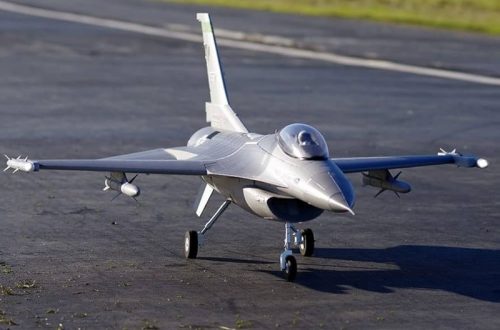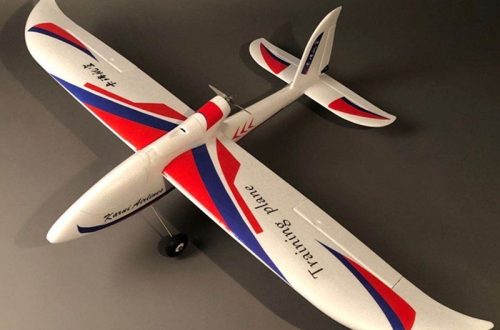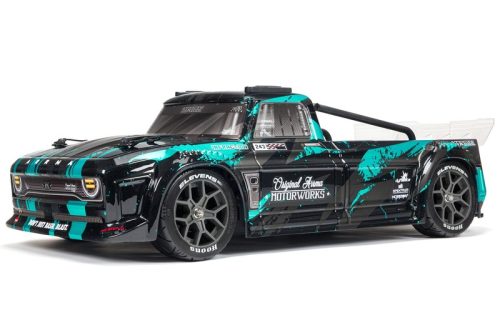Introduction to Grasshopper RC Cars
Remote Control (RC) cars stir excitement in hobbyists of all ages. Among the various models, the Grasshopper RC car stands out. It’s a hobbyist favorite, known for its classic design and reliability. In this introduction, we’ll explore what makes the Grasshopper RC car a standout choice for enthusiasts.
Grasshopper RC cars aren’t just toys, they are entry-level hobby-grade vehicles. They come with a distinctive look. Their sleek, aerodynamic frames are eye-catching on the track. These cars are also known for their easy-to-use features. This makes them perfect for beginners looking to enter the RC world. The charm of the Grasshopper RC car lies in its simplicity. It was designed to be straightforward to assemble and operate. This invites both young and old into the rewarding experience of building their own car. Operating a Grasshopper RC car brings a great sense of achievement.
These cars also offer great value. They are affordable, and their parts are readily available. This cost-effectiveness makes them a wise choice for many. With a Grasshopper RC car, you’re not just buying a plaything. You’re investing in a hobby that can grow with you.
History of the Grasshopper RC Model
The Grasshopper RC car boasts a rich history. Introduced in the early 1980s by Tamiya, it quickly became a household name. The car’s design was revolutionary for its time. With its durable plastic body and straightforward mechanics, the Grasshopper made RC cars more accessible to the masses. Initially designed as an entry-level model, the Grasshopper tapped into the growing interest in RC racing. Its affordability and ease of assembly appealed to hobbyists and casual enthusiasts alike. The car’s robust construction meant it could withstand the rigors of off-road racing. This resilience made the Grasshopper a staple at many racing events.
Over the years, Tamiya released updates to keep the Grasshopper current. However, its classic appearance has remained largely unchanged, a testament to its iconic status. The Grasshopper RC car’s legacy continues today. It has cultivated a vibrant community of collectors and racers around the world.
The Grasshopper’s continued popularity is due, in part, to its adaptability. Enthusiasts often modify their cars for increased performance. This adaptability contributes to the Grasshopper’s staying power in the evolving world of RC racing. For newcomers and veterans alike, the Grasshopper RC car is a symbol of the joy of RC racing. It has secured its place in the hearts of hobbyists for generations past and those to come.

Essential Components of a Grasshopper RC Car
Every Grasshopper RC car consists of key parts you must know. Understanding these components is crucial for proper use and maintenance. Here’s a breakdown of the essential parts of your Grasshopper RC car:
- Chassis: This is the car’s main frame. It holds everything together. The chassis is typically made of durable plastic or metal.
- Motor: The heart of the car. It provides the power to drive your RC car forward. Motors can vary in size and power.
- Battery: This powers the motor. You can choose from different types, like NiCd, NiMH, or LiPo, each with distinct capacities and run times.
- Wheels and Tires: These are crucial for traction and handling. The right tires can make a significant difference in performance, especially on different terrains.
- Suspension System: This absorbs shocks from uneven surfaces. It helps maintain stability and control when racing or maneuvering.
- Electronic Speed Controller (ESC): It regulates the motor’s speed. This component allows you to control how fast or slow your car goes.
- Radio Transmitter and Receiver: These work together to control the car. You use the transmitter to send commands to the receiver in the car.
- Servos: Servos control steering and sometimes other functions like gears. They respond to signals from the receiver.
- Body Shell: This is the outer cover that gives the Grasshopper RC its unique look. It protects the internal components from damage and debris.
Knowing these essentials will help you with your Grasshopper RC car. Whether you’re racing or just enjoying a drive, each part plays a vital role. Keep them in mind for maintenance or when considering upgrades.
Tips for Maintaining Your Grasshopper RC Car
Regular maintenance is key to keeping your Grasshopper RC car in top condition. Here are some easy-to-follow tips that will help prolong the life of your RC car:
- Keep it Clean: After each use, clean your car to remove any dirt. Wipe the body shell with a damp cloth. Use a soft brush to clean the chassis and wheels.
- Check the Tires: Inspect the tires for wear and replace them if needed. Proper tires ensure better control and less strain on the motor.
- Battery Care: Charge the batteries correctly. Always let them cool down after use before recharging. This helps extend their life.
- Tighten Loose Parts: Regularly check for and tighten any loose screws or parts. This will prevent damage and maintain car performance.
- Lubricate Moving Parts: Apply proper lubrication to gears and bearings. This reduces friction and protects against wear.
- Inspect the Motor: Motors may collect debris or wear out. Clean them occasionally and replace brushes or bearings as required.
- Update the ESC: Make sure your electronic speed controller is working properly. Update its firmware if available.
- Re-calibrate the Steering: Ensure that the servos and steering mechanism are aligned. Calibrate them for precise control.
- Store Correctly: When not in use, keep your Grasshopper RC car in a dry and cool place. Remove the batteries before storing.
Follow these tips for optimal enjoyment and a longer lifespan for your Grasshopper RC car. Happy racing!

Upgrading Your Grasshopper RC: Performance Boosting Tips
Looking to enhance your Grasshopper RC car’s performance? Here are some effective tips:
Power Up the Motor:
Consider upgrading to a more powerful motor. It can give you faster speeds and better acceleration.
Improve Battery Life:
Switch to a higher capacity battery for longer run times. LiPo batteries are a great choice for better performance.
Upgrade the Tires:
Get tires suited for your racing terrain. This offers better grip and improves handling.
Refine the Suspension:
Install a more advanced suspension system. This can help your car handle bumps and stay stable at high speeds.
Optimize the ESC:
Upgrading your ESC can allow for finer speed adjustments and improved control.
Fine-Tune with Gearing:
Experiment with different gear ratios. Finding the right balance can lead to quicker acceleration and top-end speed.
Strengthen the Servos:
Stronger servos improve response times and steering precision. This is crucial for competitive racing.
Lighten the Load:
Reduce weight by using lightweight parts where possible. A lighter car can move faster and turn more easily.
Aerodynamic Adjustments:
Modify the body shell for better airflow. This can decrease wind resistance and increase speed.
Each upgrade has the potential to take your racing experience to the next level. Remember, always test your car after any modification to ensure it performs as expected. Happy tuning!
Participating in RC Car Racing: Getting Started with Grasshopper
Engaging in RC car racing can be thrilling, and starting with a Grasshopper RC car is ideal for beginners. Here’s how to dive into the racing world with your Grasshopper:
- Join a local club: Find a local RC car racing club. Clubs often offer tracks, events, and a community of fellow enthusiasts.
- Learn the basics: Understand the rules and formats of RC car racing. It helps to know what to expect on race days.
- Practice driving: Spend time driving your Grasshopper. Practice makes perfect, and you’ll get a feel for handling and speed.
- Start with friendly races: Participate in casual races to build your skills. These less competitive settings are great for learning.
- Attend workshops: Some clubs host workshops for new racers. These can provide valuable lessons in driving and car maintenance.
- Upgrade as needed: As you grow more confident, consider upgrading your Grasshopper for better performance.
- Enter competitions: When ready, sign up for competitions. They can be fun and a good test of your ability.
Remember, RC car racing with a Grasshopper is about fun and growth. Enjoy each step of the journey as you learn and improve.

Troubleshooting Common Grasshopper RC Car Issues
When your Grasshopper RC car hits a snag, worry not. Here’s how to tackle some common issues:
- Car Won’t Start: Check the battery first. Make sure it’s charged and properly connected. Inspect the wires for any damage.
- Poor Handling: If your car veers off track, it might be the tires. Ensure they’re evenly worn and adequately inflated. Also, examine the alignment.
- Motor Problems: When the motor isn’t running smoothly, see if it’s clean. Get rid of any dirt or debris. Replace worn-out parts if needed.
- Short Battery Life: Batteries lose power fast if they’re old or overused. Replace with a fresh one if they don’t hold a charge well.
- Lack of Speed: Are you not zipping around as fast as you’d like? Try a more powerful motor or check for gear issues.
- Jumpy Controls: Unresponsive or erratic controls likely mean trouble with the transmitter or receiver. Ensure they’re correctly paired and functioning.
- Glitches in Steering: Stiff or unresponsive steering might be a servo issue. Check for a secure connection and proper calibration.
Facing challenges with your Grasshopper RC car can be part of the hobby’s enjoyment. With these tips, you can reduce downtime and improve your RC experience. Get back on track and enjoy the thrill of the drive!
Where to Connect with Other Grasshopper RC Car Enthusiasts
Social media is vibrant with Grasshopper RC car fans. Here are ways to plug into the community:
- Online Forums: Search for forums dedicated to RC car enthusiasts. They’re a great resource for advice and sharing experiences.
- Social Media Groups: Join Grasshopper RC car groups on platforms like Facebook and Instagram. Share photos, tips, and engage in discussions.
- YouTube Channels: Subscribe to channels focused on RC racing. You can learn a lot from tutorial videos and race recordings.
- Meetups and Clubs: Look for local RC clubs or meetups in your area. They often have events where you can race and chat with other hobbyists.
- Racing Events: Attend racing events, even as a spectator. They’re perfect for meeting people with the same passion.
- Hobby Shops: Frequent your local hobby shop. Shop owners and other customers can be great sources of information.
Connecting with fellow Grasshopper RC car fans can enhance your hobby. You can share tips, get support, and enjoy being part of a community. Happy racing!




